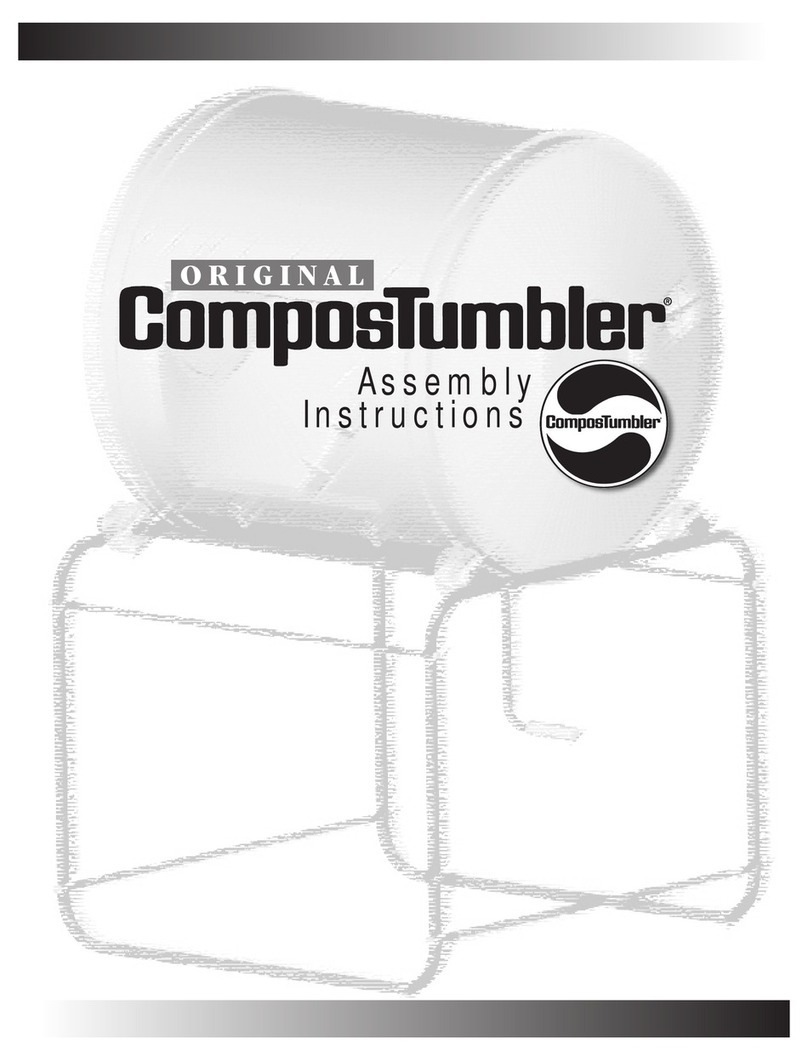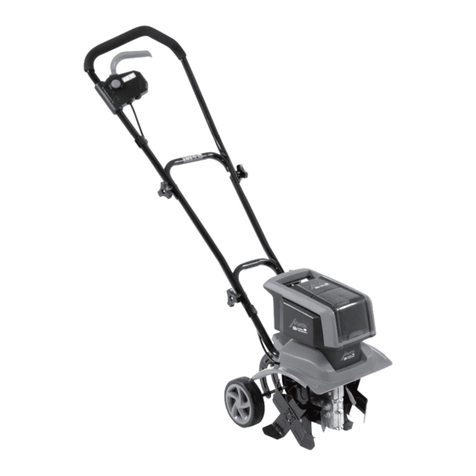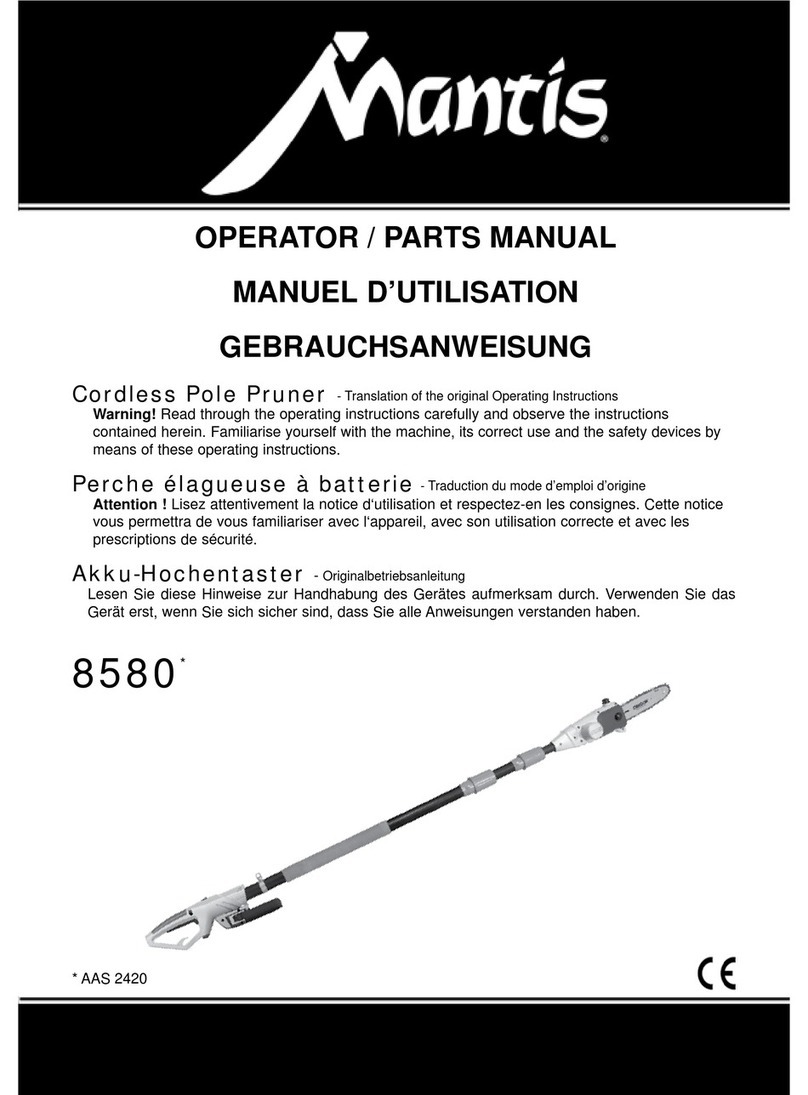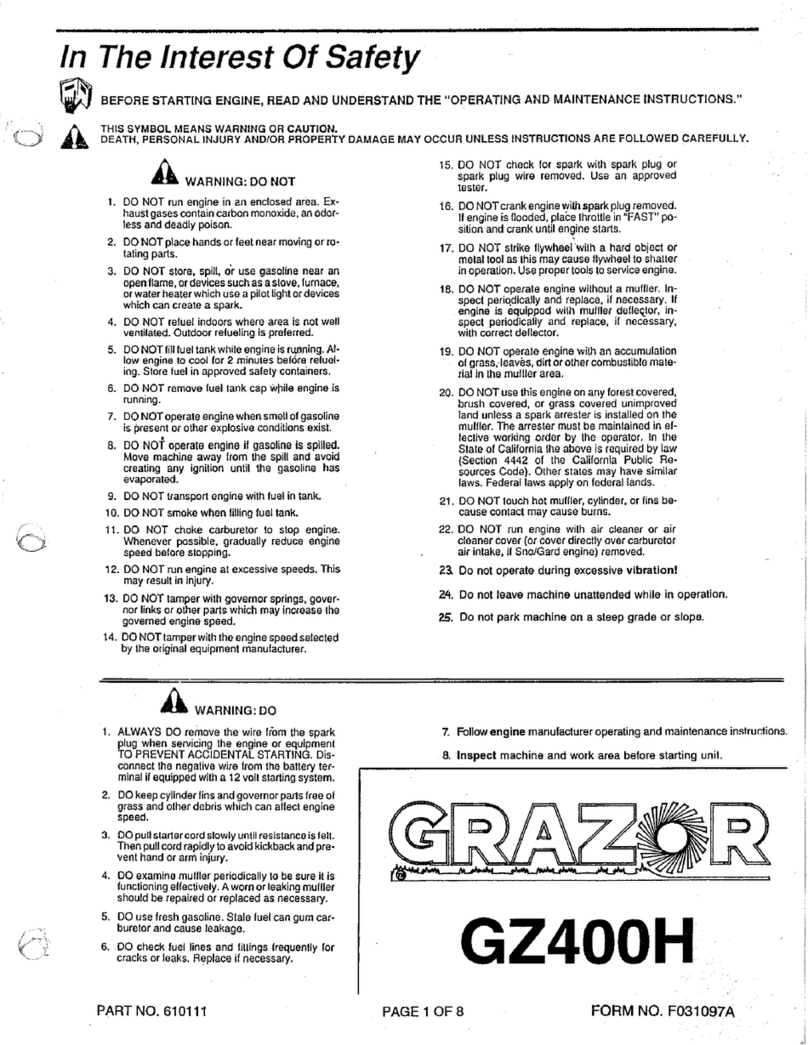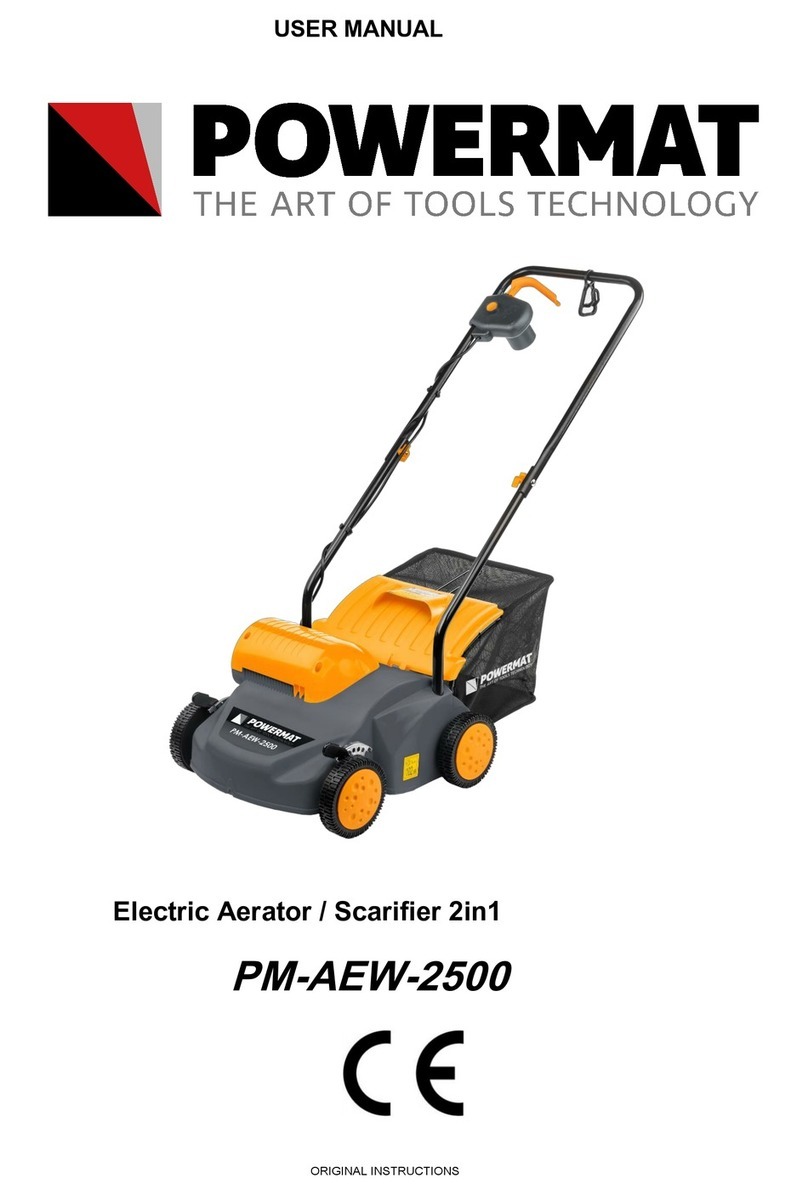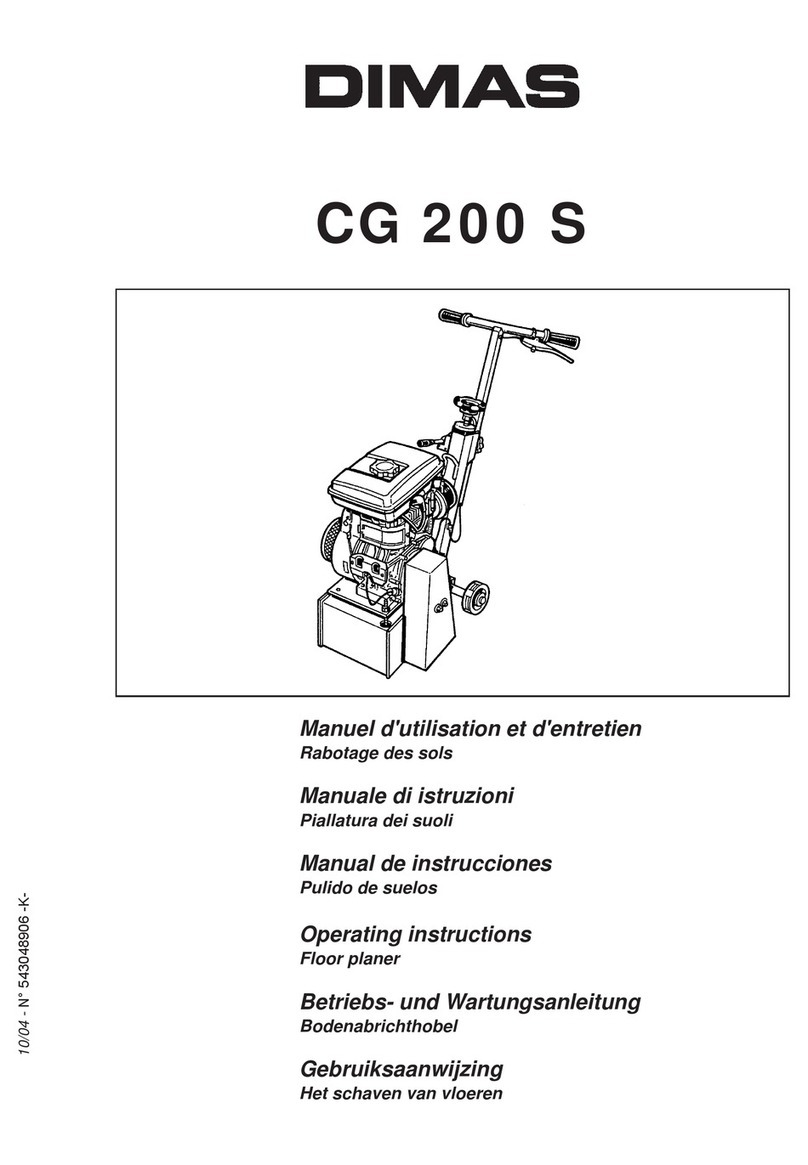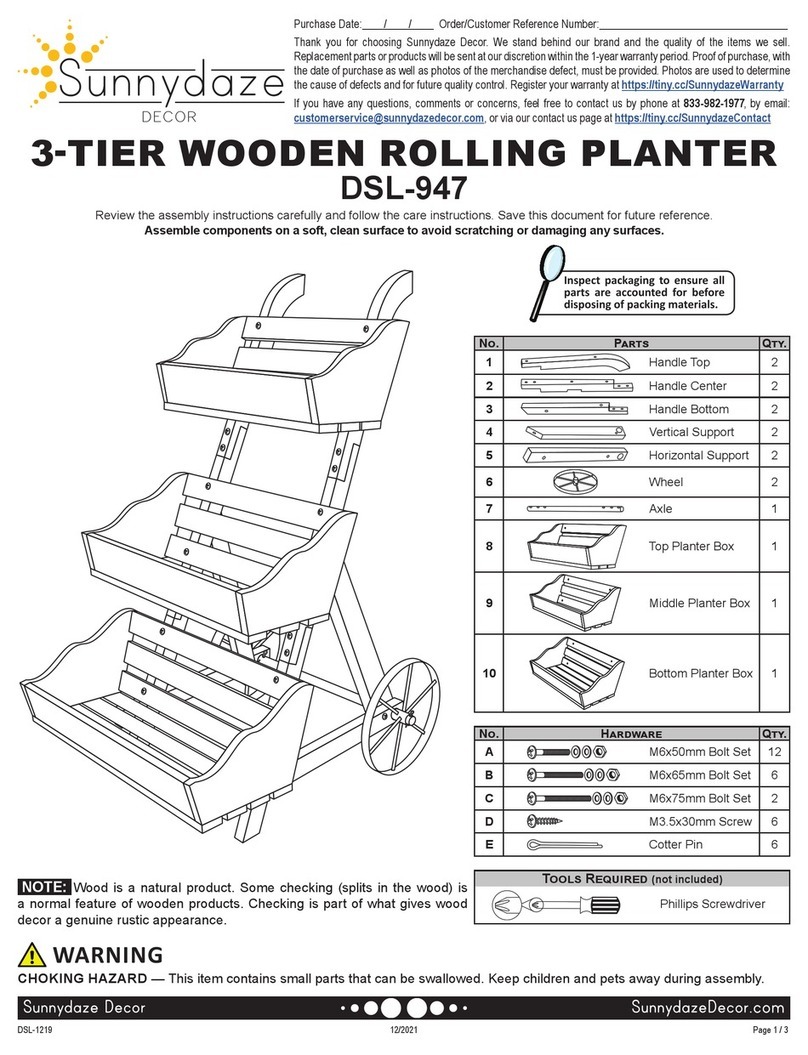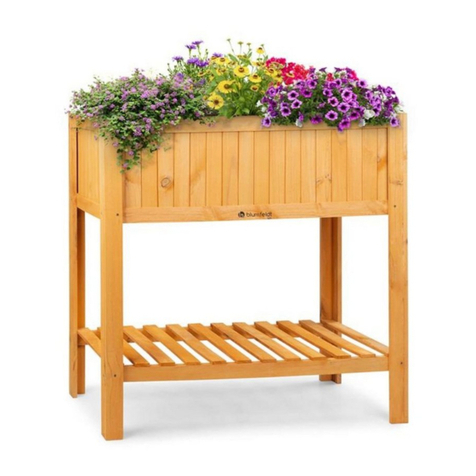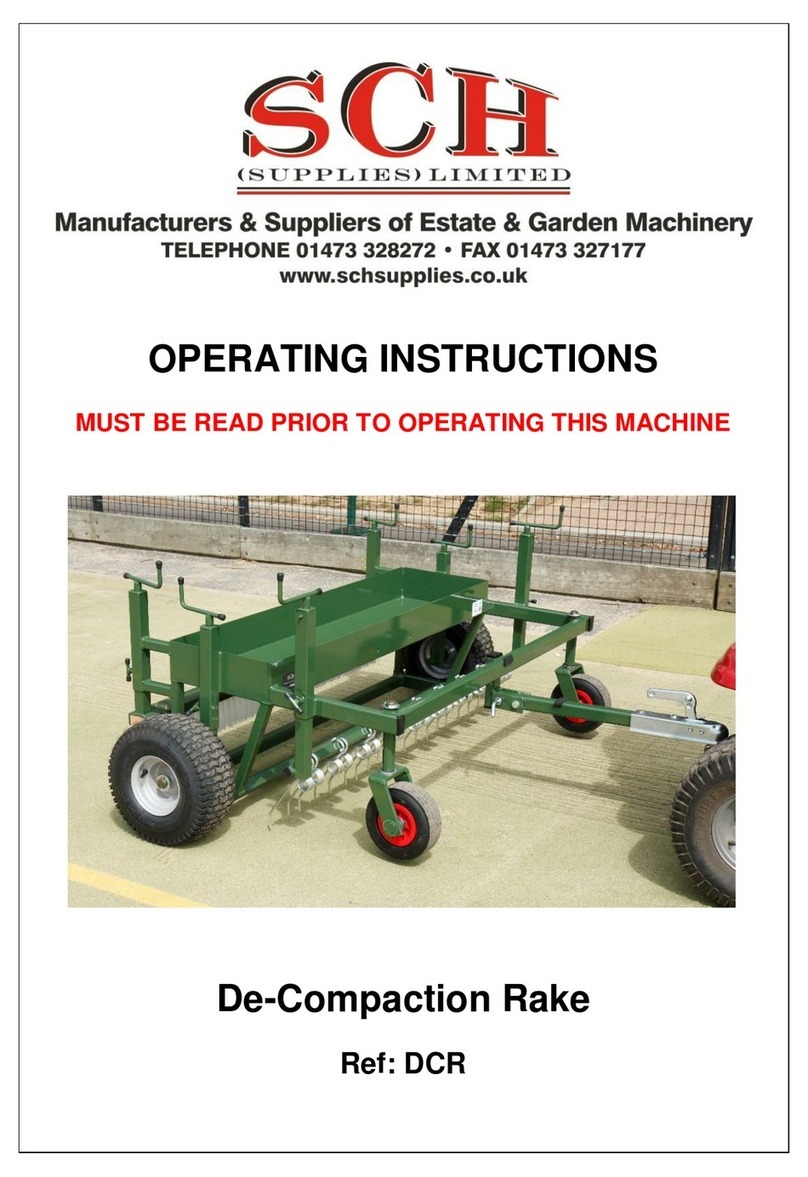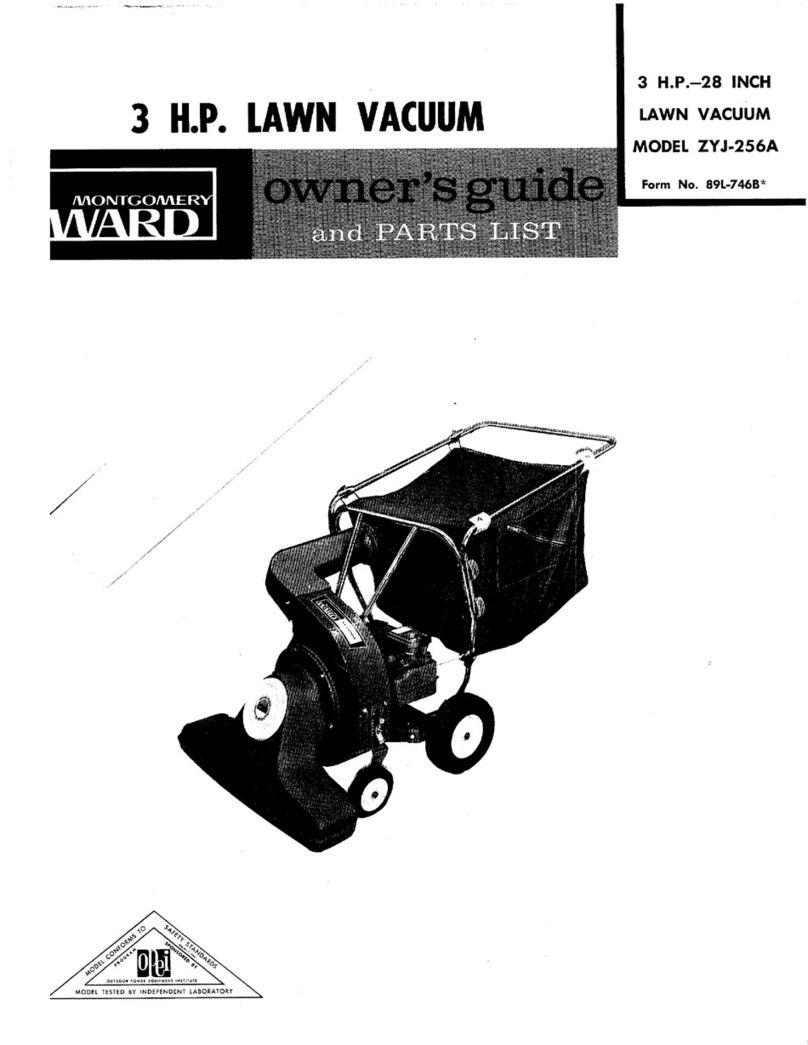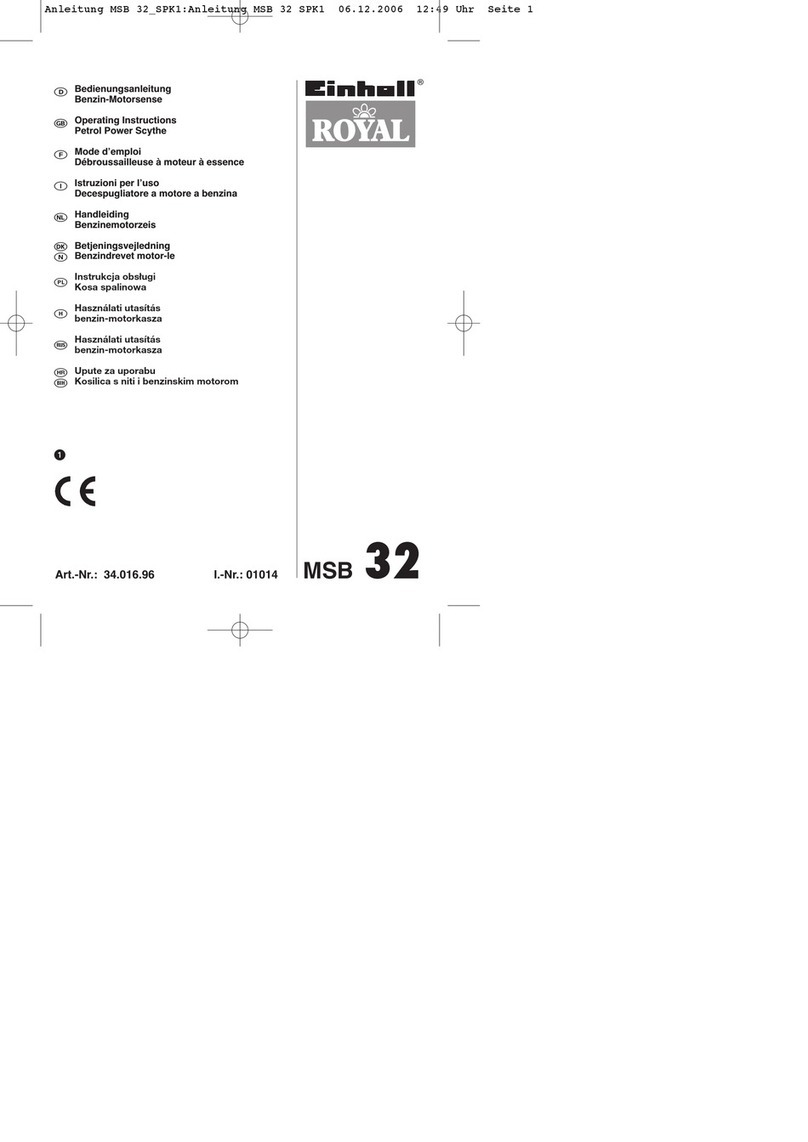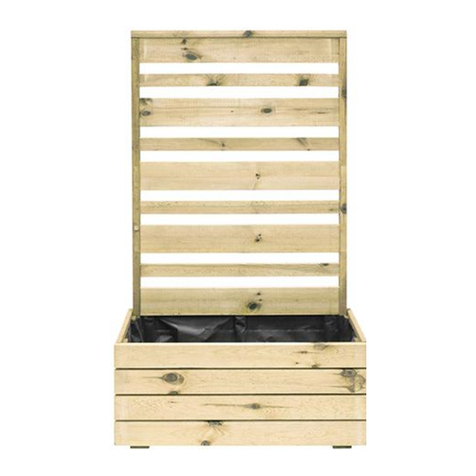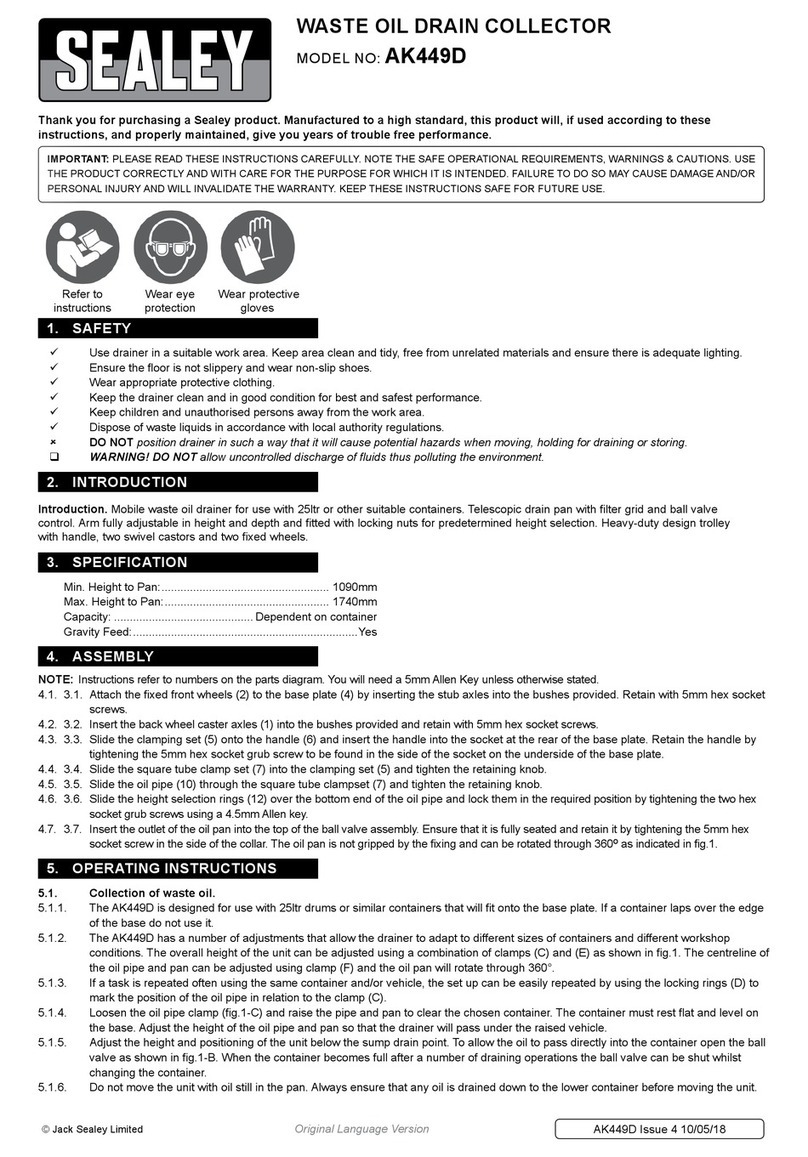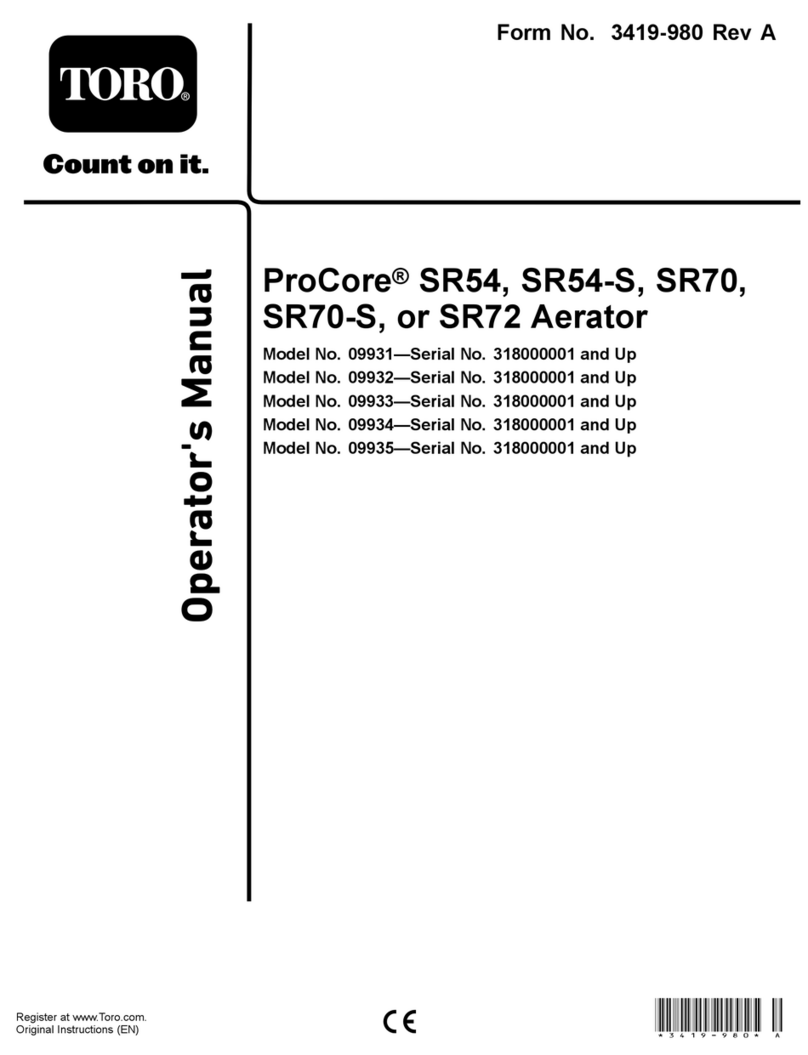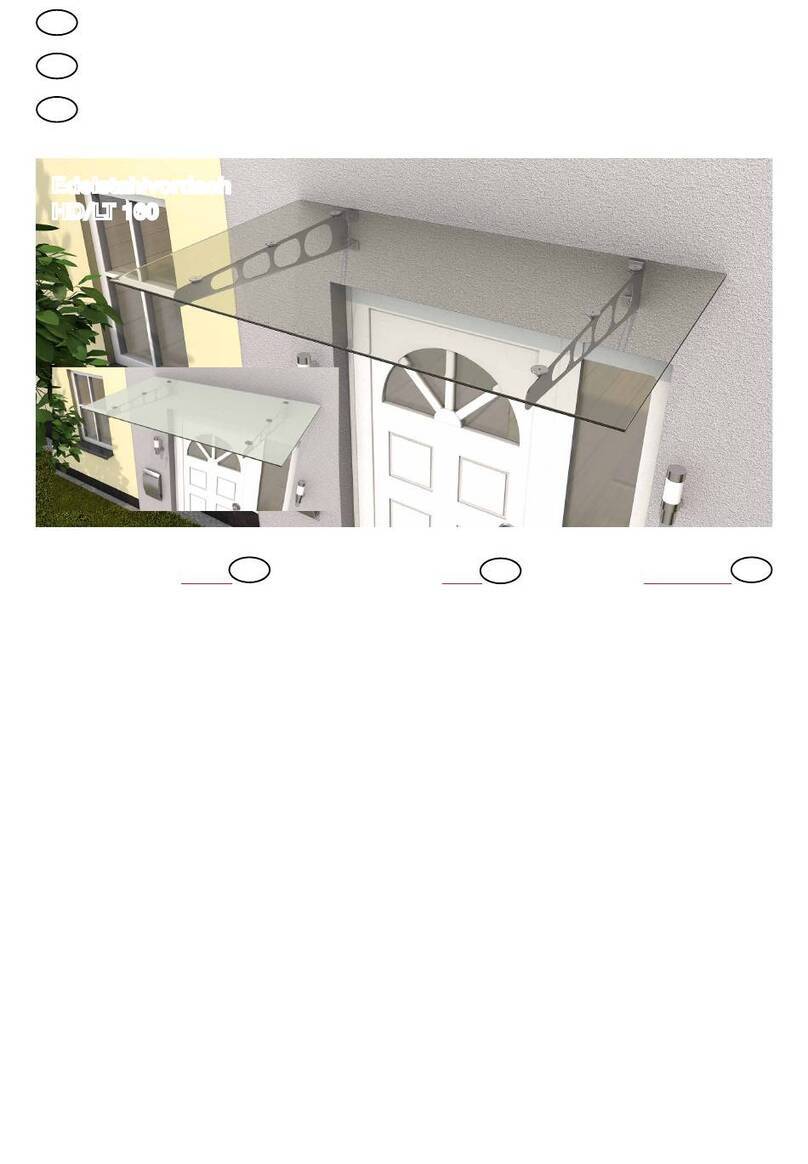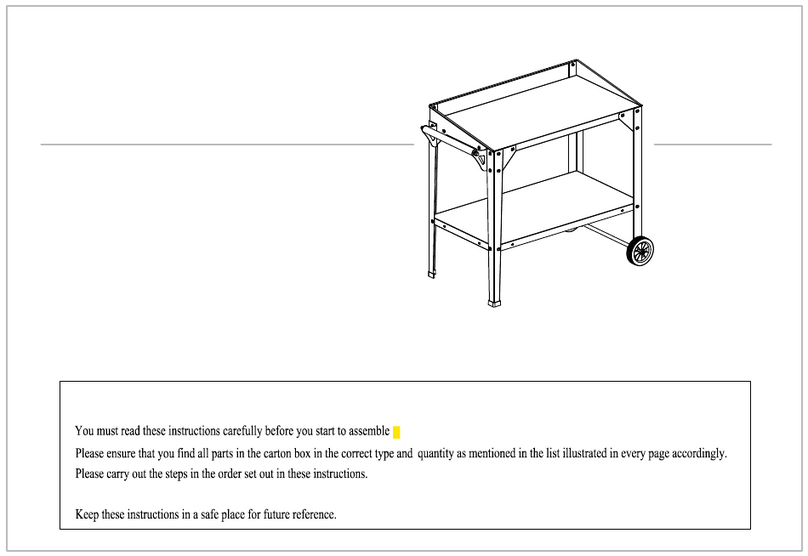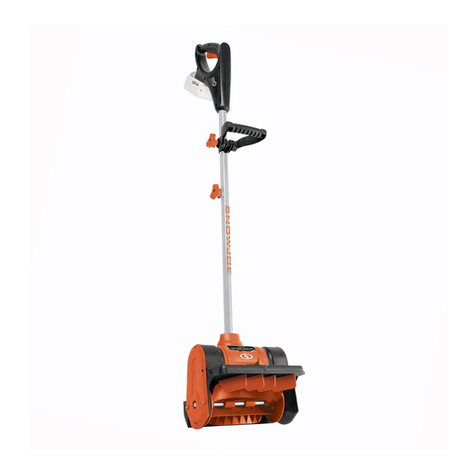Mantis ComposT-Twin User manual

CC
omposompos
TT
--
TT
winwin
®
TM
Benutzerhandbuch DE
Manuel d’instructions FR
Owner’s manual GB

Welcome to the world of Mantis gardening!
Here’s your new Mantis ComposT-Twin...the
unique dual-chamber composter that will
make gardening easier for you.
With your new ComposT-Twin, you’ll always
have a place to throw your kitchen scraps,
leaves and grass clippings...and you’ll have
aconstant supply of the rich, nutrient-filled
compost your garden loves.
Once you know how to assemble and use
your ComposT-Twin correctly, we guarantee
you’ll love it. So first, please read this
manual and watch the enclosed assembly
video. They show, step by step, how to
assemble your machine and how to get the
best results.
Safety rules & warnings
You will notice throughout this owner’s manual safety
rules and important notes. Make sure you understand
and obey these warnings for your own protection.
An important part of the safety system
incorporated in this composter is
the information label found on the
door of the composter. This label
must be replaced in time; it is your
responsibility to replace this label
when it becomes hard to read. The
location of this label, part number
(P/N 200600), is illustrated on page
42.
Table of contents
Safety rules & warnings .......................................... 41
Safety labels ............................................................. 41
Box contents ............................................................ 42
Support frame assembly ......................................... 44
Support frame assembly layout ............................. 44
Support frame parts list .......................................... 45
Drum parts list ......................................................... 48
Drum assembly layout ............................................. 49
Drum assembly ........................................................ 50
Maintenance instructions ....................................... 55
Using your ComposT-Twin ...................................... 55
The right mix of materials ...................................... 56
Using compost ......................................................... 57
Troubleshooting tips ............................................... 58
Limited warranty information ................................ 59
Safety label identification
Warnings
•Check and tighten all of the 2” bolts (part no.
200500) on the frame assembly every two months.
•Keep childen away from the ComposT-Twin.
•Remove the drum from the frame before relocating
the unit.
•Do not overload the ComposT-Twin. Maximum
load is 600 pounds.
Mantis customer service
If you have any difficulty following the assembly
instructions, contact your Mantis representation for
assistance. We welcome your feedback as we strive to
build quality and ease of use into all of
our gardening products.
WARNING:
CAUTION:
(4.87 m)
Place the ComposT-Twin on smooth level ground.
Remove the ComposT-Twin door when emptying compost.
Keep hands and loose clothing away from gears when
turning the ComposT-Twin.
Balance the load inside the chambers before you release
the handles.
WARNING:
41
GB
SAFETY WARNING
ATTENTION: THIS SYMBOL POINTS OUT
OUR IMPORTANT SAFETY INSTRUCTIONS.
TOREDUCE THE POTENTIAL FOR
ACCIDENTS, COMPLY WITH THE SAFETY
INSTRUCTIONS IN THIS MANUAL.
s
!s
!

42
GB
Box contents
All of the ComposT-Twin parts, including sheet metal, frame tubing, plastic end caps, and
hardware, are packed in three boxes. Refer to the diagrams below for the contents of each box and the parts lists on the
following pages.
Safety label

43
GB
Large parts, boxes 1-3
Hardware parts bag (part No.200517)
KEY NO. DESCRIPTION QTY P/N ASSEMBLY
1“C” shaped lower support 2 200100 Frame
2Short spacer (lower support) 2200101 Frame
3Upper support with axle 2200102 Frame
rod guides
4Long spacer (upper support) 2200103 Frame
5Axle rod 2200115 Frame
6Centre support wheel 2200107 Frame
7Gear 4200105 Frame
8Handle 1200108 Frame
13 End cap 2200204 Drum
14 Divider 1200201 Drum
15 Breather cap 4200220 Drum
16 Breather screen 4200221 Drum
17 Door 2200207 Drum
18 Door opening, 2200203 Drum
2nd panel
19 Drum 1st panel 2200216 Drum
20 Drum 3rd panel 2200211 Drum
21 Drum 4th panel 2200224 Drum
22 Threaded rod 4200202 Drum
KEY NO. DESCRIPTION QTY P/N ASSEMBLY
9Plastic grip 1200109 Frame
10 Push cap nut 1200110 Frame
11 Spring pin 4200106 Frame
12 2” long shoulder bolt 8200500 Frame
(51 mm)
23 Mesh screen 2200222 Drum
24 Latches 4200223 Drum
25 Acorn nut 8200504 Drum
26
No. 8 self-tapping screw (for breather)
4651 Drum
27 No. 10 screw 20 200506 Drum
28 No. 10 flat washer 20 200508 Drum
29 Keps nut 20 200509 Drum
30 No. 10 shoulder screw 12 200510 Drum
31 No. 10 nylon insert lock nut 12 200511 Drum
32 1/4” (6 mm) flat washer 4200512 Drum
(for threaded rods)
33 Disposable red protective 4300316 Drum
cover
10
9
23
24
11
27
32
29
28
30
26
25
12
31
33

Assembly of the ComposT-Twin is divided into two major sub-assemblies:
The ComposT-Twin is easiest to assemble with TWO PEOPLE sharing and coordinating the work. Allow 4-6 hours
to assemble the entire composter.
Begin with the support frame assembly.
Tools needed for Support Frame Assembly:
Hammer or rubber mallet and 3/4” (19 mm) spanner.
Find a large, shaded area outside your house or in your garage to assemble the support frame. DO NOT
ASSEMBLE THE SUPPORT FRAME IN YOUR LIVING ROOM, AS YOU MAY NOT BE ABLE TO GET IT THROUGH
THE DOOR WHEN YOU ARE FINISHED!
SAFETY WARNING
THE DIMENSIONS OF THE ASSEMBLED
SUPPORT FRAME ARE 35” (89 cm) HIGH X 56” (142 cm)
LONG X 41” (104 cm) WIDE. BE SURE TOASSEMBLE THE
SUPPORT FRAME IN A GARAGE OR OPEN AREA WHERE
YOU WILL BE ABLE TO MOVE IT EASILY ONCE YOU ARE
FINISHED.
s
!s
!
44
Support frame
assembly layout
Support frame and drum
Tools needed for assembly of ComposT-Twin
4Hammer or rubber mallet
43/8” (10 mm) spanner
43/4” (19mm) spanner
4Regular screwdriver (flat head)
47/16” (11 mm) spanner
4Phillips screwdriver (cross head)
47/16” (11 mm) socket spanner
4Wheel bearing grease
GB
KEY NO. DESCRIPTION QTY PART NO.
1 “C” shaped lower support 2 200100
2 Short spacer (lower support) 2 200101
3 Upper support with 2 200102
axle rod guides
4 Long spacer (upper support) 2 200103
5 Axle rod 2 200115
6 Centre support wheel 2 200107
KEY NO. DESCRIPTION QTY PART NO.
7 Gear 4 200105
8 Handle 1 200108
9Plastic grip 1 200109
10 Push cap nut 1 200110
11 Spring pin 4 200106
12 2” (51 mm) long 8 200500
shoulder bolt
1
4
2
14
12
3
11
1
7
6
5
8
9
10
5

10
3
542
8
7
12
11
6
1
9
Place second “C” shaped lower support in
aposition where the long legs of the tubing are
diagonally opposite each other, as shown. Fasten the
other end of the short spacer to the second “C”
shaped lower support. Repeat this step on the other
side.
Parts for the support
frame assembly
Long legs of the tubing are opposite each other
Step 2
Step 3 Close-up
Step 1
Gather the parts you will
need to assemble the support
frame.
Fasten one end of the short spacer (key No.2) to “C”
shaped lower support (key No.1) with 2” shoulder bolt
(key No.12). Finger tighten - do not completely tighten
nuts and bolts.
45
GB
KEY NO. DESCRIPTION QTY PART NO.
1 “C” shaped lower support 2 200100
2Shortspacer (lower support) 2 200101
3 Upper support with 2 200102
axle rod guides
4 Long spacer (upper support) 2 200103
5 Axle rod 2 200115
6 Centre support wheel 2 200107
7 Gear 4 200105
8 Handle 1 200108
9 Plastic grip 1 200109
10 Push cap nut 1 200110
11 Spring pin 4 200106
12 2” (51 mm) long 8 200500
shoulder bolt

46
Place upper supports (key No.3) in a position where
the smaller leg of the upper support slides into the
wider leg of the lower support, and the wider leg of
the upper support slides into the smaller leg of the
lower support, as shown. Slide the ends of the upper
support tubing fully into and over the lower support
section. Repeat this step on the other end.
Fasten the long spacers (key No.4) to the upper
support on both sides using 2” (51 mm) shoulder
bolts (key No.12). Tighten fully.
Slide plastic grip (key No.9) over the handle
(key No.8). Be sure that pin hole is on the
opposite end of the handle.
Place the push cap nut (key No.10) over the handle
and tap it on with a hammer or rubber mallet. Put
handle assembly aside for now.
Slide together
Step 4 Step 5
Step 6 Step 7
Pin hole
9
8
10
Slide one end of the axle rod (key No.5) into the axle
rod guide of the upper supportassembly.Slide one gear (key No.7), one centre support wheel
(key No.6), and another gear onto the axle rod in the
order shown.
Step 8 Step 9
767
GB

Make sure that the gear pin opening faces the pin
hole in the axle rod tubing. Repeat these steps 8-10
for the second axle rod.
Gear pin opening
Step 10 Step 11
Pin hole in axle
rod
Slide the other end of the axle rod through the
corresponding guide so that the axle rod is supported
by the guides.
Choose the corner for the handle (this decision is
entirely up to you). Place the end of the handle
assembly inside the axle rod at that corner,and align
the holes of the handle and axle rod. Gently drive
spring pin (key No.11) through the holes using a
hammer or rubber mallet.
Drive the spring pins through the holes in the three
other corners of the frame. The spring pin should
extend an equal amount on each side of the axle rod.
Line up the pin opening in the gear (key No.7) with
the corresponding pin and slide the gear over it.
Repeat this step with each gear. TIGHTEN ALL NUTS
AND BOLTS SECURELY.
Place the frame on level ground, where you want the
composter to be located in your garden. Lubricate the
four axle rod guide sections with wheel bearing
grease.
SAFETY WARNING
A SLANTED OR UNEVEN POSITION CAN MAKE THE
LOADED COMPOSTER UNSTABLE AND HARDER TO
TURN. BE SURE TO PLACE THE SUPPORT FRAME ON
LEVEL GROUND
s
!s
!
Step 12 Step 13
Step 14
The support frame for your
Mantis ComposT-Twin is ready!
47
GB

Small parts
close-up
Step 15
48
Parts for the drum
assembly
Gather the parts you
will need to assemble
the ComposT-Twin drum.
Now, you will assemble the ComposT-Twin Drum:
Tools needed for Drum Assembly:
3/8” (10 mm) spanner Regular screwdriver (flat head)
7/16” (11 mm) spanner Phillips screwdriver (cross head)
7/16” (11 mm) socket spanner
GB
KEY NO. DESCRIPTION QTY PART NO.
13 End cap 2 200204
14 Divider 1 200201
15 Breather cap 4 200220
16 Breather screen 4 200221
17 Door 2 200207
18 Door opening, 2nd panel 2 200203
19 Drum 1st panel 2 200216
20 Drum 3rd panel 2 200211
21 Drum 4th panel 2 200224
22 Threaded rod 4 200202
23 Mesh screen 2 200222
24 Latches 4 200223
25 Acorn nut 8 200504
26
No. 8 self-tapping screw (for breather)
4 651
27 No. 10 screw 20 200506
28 No. 10 flat washer 20 200508
29 Keps nut 20 200509
30 No. 10 shoulder screw 12 200510
31 No. 10 nylon insert lock 12 200511
nut
32 1/4” (6 mm) flat washer 4200512
(for threaded rods)
33 Disposable red protective 4 300316
cover
13 14
19
18
20 21
17 22
16
15
23
30 24
28
25
27
29
32
26
33
31

20
32
25
21
24
15
18
17
19
14
30
31
22
26
16
28
29
27
23
13
30
31
30
31
49
Drum assembly
layout
GB
KEY NO. DESCRIPTION QTY PART NO.
13 End cap 2200204
14 Dividor 1200201
15 Breather cap 4200220
16 Breather screen 4200221
17 Door 2200207
18 Door opening, 2nd panel 2200203
19 Drum 1st panel 2200216
20 Drum 3rd panel 2200211
21 Drum 4th panel 2200224
22 Threaded rod 4200202
23 Mesh screen 2200222
24 Latches 4200223
KEY NO. DESCRIPTION QTY PART NO.
25 Acorn nut 8200504
26
No. 8 self-tapping screw (for breather)
4651
27 No. 10 screw 20 200506
28 No. 10 flat washer 20 200508
29 Keps nut 20 200509
30 No. 10 shoulder screw 12 200510
31 No. 10 nylon insert lock 12 200511
nut
32 1/4” (6 mm) flat washer 4200512
(for threaded rods)
33 Disposable red protective 4300316
cover

19 18 20 21
There are two different types of ribs on the panels: one rib is straight, the other is clip-shaped.
Place panels on a flat ground surface with the ribs facing up, in the following order:
The two slots of the drum 1st panel (key No.19) should be next to the door opening (key No.18).
The clip-shaped rib of the 2nd panel (key No.18), door opening,should face the 1st panel.
The 4 latch holes of the drum 3rd panel (key No.20) should be next to the flat rib of the 2nd panel.
The clip-shaped rib of the drum 4th panel (key No.21) should be next to the drum 3rd panel.
Place the drum’s 1st panel in a position where the
straight rib is facing the door panel’s clip-shaped rib.
Align outside edges to align holes. Slide the clip-shaped
rib of the door panel over the straight rib of the drum’s
1st panel, matching up the holes. If necessary, tap into
place with a hammer or rubber mallet.
Fasten panels using
screw (key No. 27), flat
washers (key No. 28 and
Keps nut (key No.29).
Tighten screws using
3/8” (10 mm) spanner
and a flat head
screwdriver.
Step 16
Step 17
Step 18
SAFETY WARNING
USE OF A HAMMER ON DRUM PANELS MAY
DAMAGE PAINT. COVER PANEL EDGE WITH
A CLOTH BEFORE USING HAMMER.
s
!s
!
1st panel has 2 door
slots
2nd panel
door opening 3rd panel has
4latch holes 4th panel has
one clip-shaped
rib
50
Clip-shaped rib
Attach 3rdand 4th panels the same way to complete
the first chamber assembly.Assemble the sheet metal
panels for the second chamber using the same
procedure.
Position mesh screen (key No. 23) onto the vent hole
of the end cap. Affix it using the #10 shoulder screw
(key No. 30 and the #10 locking nut (key No. 31).
Repeat this step with the second end cap.
Step 19 Step 20
GB

Correct assembly of the body of the first chamber is
very important. Beginning at the arrow located inside
the end cap, position the rib of the 1st panel (key No.
19) in the alignment slot. Bend the panels
counterclockwise with ribs inside (the vent opening in
the end cap should be across from the door opening,
2nd panel (key No. 18)).
Continue to fit the edge of the sheet metal into the
opening formed by the inside edge of the end cap and
vertical ribs to form the chamber. Overlap the last
joint and align the slots. Fasten the last joint using
shoulder bolts (brass coloured, key No. 30), nylon
insert lock nuts (key No. 31), Phillips head screwdriver
and 3/8” (10 mm) spanner.
Step 21
Step 22
51
Vent hole
First panel
(key No.19)
Door opening
(key No.18)
SAFETY WARNING
DO NOT TIGHTEN BOLTS - THEY SHOULD
SPIN FREELY! SLOTS WILL ACCOMMODATE THE
EXPANSION OF MATERIAL DURING
TEMPERATURE CHANGES
s
!s
!
Find the two sets of mounting holes on
the drum’s 3rd panel (key No. 20) of the first chamber.
Attach latches (key No. 24) to the panel using screws
(key No. 27), flat washer
(key No. 28) and Keps nut
(key No. 29), as shown.
To attach the door latch (key No. 24), make sure that
the hook part of the latch is pointing up towards the
door panel.
Place the four threaded rods inside the sheet metal
chamber, and into the four round openings found in the
end caps.
Step 23
Step 25
Step 24
Step 26
SAFETY WARNING
USE CARE IN HANDLING THE THREADED RODS. BE
SURE TO USE THE DISPOSABLE RED PROTECTIVE
COVERS FOR YOUR SAFETY IN ASSEMBLING THE
COMPOSTER.
s
!s
!
GB

Pick up the sheet metal assembly of
the second chamber and place it on
top of the divider to align with the
door of the first chamber.
Overlap the last joint and align the slots.
Fasten the last joint using shoulder bolts
(brass coloured, key No. 30), nylon insert
lock nuts (key No. 31), Phillips head
screwdriver and 3/8” (10 mm) spanner.
Step 32
Step 33 Step 34
52
Bend the assembly with the ribs
inside and fit the edge of the
sheet metal into the opening
formed by the inside edge of the
divider and the vertical ribs. Door
openings should be located side
by side.
The divider has the words “DOOR” printed on the
inside. Line up the words with the door opening
panel. Pick up the divider and guide it so the
threaded rods slip through the four openings in the
divider.
Fit the rim of the divider over the open edge of the
sheet metal chamber, tapping to secure in place.
Holding the threaded rods and the end
of the chamber, tilt the chamber on its
side. Thread an acorn nut onto the
exposed thread on the outside of the
end cap. Repeat this step with
all four threaded rods.
Step 27 Step 28
Step 30
Step 29
Place the disposable red
protective covers (key No.
33) on one end of each
threaded rod.
Holding the threaded rods and
the end of the chamber,lift the
chamber to rest on the end cap
once more.
Step 31
GB

Find the two sets of mounting holes on the drum’s 3rd
panel (key No. 20) of the second chamber. Attach latches
(key No. 24) to the panel using screws (key No. 27), flat
washer (key No.28) and nut (key No. 29), as shown. Make
sure that the hook part of the latch is pointing up towards
the door panel.
Step 35
Step 36
Remove the disposable red protective
covers from the end of each threaded
rod and discard.
53
Position the second end cap over the open end of the
drum assembly, so the four round openings align with
the four threaded rods, and making sure that the vent
hole lines up with the vent hole in the other end cap.
Fit the end cap rim over the edge of the sheet metal
assembly,making surethat the threaded rods slip
through the end cap holes.
Step 37
Place 1/4” flat washer (key No. 32) over each
threaded rod and thread an acorn nut (key No. 25)
onto the end of each rod. Tighten acorn nuts using
7/16” (11 mm) socket spanner.
On the support frame, check axle rod
gears and middle wheels; be sure that
pins areinside of the pin openings of
the gears, and that the wheels are in the middle of the
axle rods.
Check the door position before placing the drum on
the bottom support frame. The door openings should
be on the same side of the bottom frame as the
handle, and latches should be on the bottom part of
the door opening.
Step 38
Step 39
Step 40
GB

Your ComposT-Twin is now completely
assembled! Please read operating
instructions before use.
Close door using latches.
Step 45
Put self-tapping screw (key No. 26) into the
cavity in the middle of the breather cap. Be sure that
the screw’s tip is coming out of the hole. Place the
breather screen (key No.16) on the front side of the
door, covering the round opening.
Position the
breather cap (key
No. 15) on
the inside of
the door (key No.
17), over the
breather screen.
Place the tip of the
cap’sboss inside the
hollow partof the
screen’s boss. Hold
breather cap and
attach these two
parts with self-
tapping screw using
Phillips head
screwdriver. Apply some pressure on the screw head to
start thread cutting operation. Repeat this step and
assemble breathers at all four locations.
Hold door horizontally and fit door hooks through the
openings above the door panel. Close the doors on
the drum to cover door opening and check the
position of the breather screens.
Step 42
Step 44
54
Lift the drum assembly and position on the bottom
frame. Adjust gears and middle wheels so that gear
teeth mesh with the corresponding end cap teeth, and
the middle divider edge fits into the middle wheel
groove.
SAFETY WARNING
COMPOSTER DRUM IS VERY HEAVY -
BE CAREFUL WHEN LIFTING. AT LEAST
TWO PEOPLE ARE NEEDED TO LIFT DRUM AND POSITION
ON SUPPORT FRAME.
s
!s
!
Step 41
Step 43
Step 46
1. Unlatch both latches
2. Open door slightly
3. Slide door up into the
drum and rotate.
4. Pull to remove door.
5. Do not bend the door
hooks while removing the
door.
ComposT-Twin Panel
DOOR
CLOSED
Door Hook
TO REMOVE DOOR:
To open, slide door up
and rotate - then pull to
remove
Hooks
GB

After emptying finished compost from a chamber, rinse the
inside throroughly with a garden hose. Occasionally, check the
breather screens in the doors to make sure they do not
become clogged.
Do not use any chemicals or chemically-based products in the
ComposT-Twin. Chemicals are corrosive to the galvanized steel
drum
During the winter months, if you are not adding materials to
your CompostTwin, you may wish to cover the unit with a
composter cover (item No. 201104 from your Mantis
representation) or tarpaulin for additional protection.
At the beginning of each season, be sure to:
4Lubricate the four axle rod guides with
awheel bearing-type grease.
4Check all screws and bolts for tightness.
Maintenance instructions
Step 47
55
How to use your new ComposT-Twin
Once a day, turn the handle to rotate the ComposT-
Twin barrel about five times. When the tumbler mixes
and aerates your material, it builds up a heat core for
fast decomposition.
You can use a thermometer (P/N 201101*) and a
moisture meter (P/N 201103*) to check how your
batch is “cooking”!
*these products are available from your
Mantis representation.
If you want to, add compost activator to speed up the
decomposition process. Close the door,and do not
disturb this chamber. When you have more refuse or
scraps to compost, just begin filling the second drum.
Step 48 Step 49
Step 50 Step 51
Fill the first drum with your mix of organic leftovers
and garden scraps. For the fastest composting, fill the
chamber at least 2/3 full. See the next section for more
information on getting the right mix of materials.
GB

Carbon
Carbon-rich materials are
generally brown or yellow and
dry. These include:
Fallen leaves
Dried plant prunings like spent
annuals and perennials
Wood ashes
Straw or hay
Shredded black & white paper
Wood shavings
Sawdust
Nitrogen
High-nitrogen “green”
materials arealso essential; without
them, your compost won’t heat up.
Nitrogen enables the micro-organisms
to break down the carbon materials.
For nitrogen, use:
Fresh leafy prunings from flowers,
hedges and shrubs
Over-ripe fruit and vegetables
Fresh grass clippings
Salad scraps from the kitchen
Coffee grounds & tea bags
Egg shells (rinsed & crushed)
Hair trimmings
Fresh farmanimal manure
Do not add
Charcoal or coal ash
Meat or dairy-related materials or
shortenings
Bones, fat or meat
Pet droppings
Pesticide-treated plants and grass
clippings
Pressure-treated wood scraps and
sawdust
Poison sumach and poison ivy
Grain-derived foods
Keeping the right ratio of carbon to nitrogen is an
important factor in successful composting. Ideally, the
mix should be:
30 parts carbon to 1 part nitrogen
A30:1 mixturebreaks down fast (“hot” compost); a
different ratio may take several months to finish (“slow”
composting).
Shredding or breaking up coarse materials will also
speed up decomposition. Use any of the materials on the
following page for composting, just be sure to maintain
the proper C/N ratio.
In several weeks (depending on the mix, mosture
content and temperature) you should be able to use
your first batch of compost. be sure to remove the
door before turning the barrel and emptying the
compost chamber.
Now, you can use this chamber for your daily scraps
and let the second chamber finish the process of
decomposition.
The right mix of materials
Step 52 Step 53
Step 54
56
GB

Using your compost
No gardener ever suffered from having a
surplus of compost. Well-finished compost can be
used at any time, in any season, and in any
amount. Here are a few ways you’ll enjoy a
never-ending supply of compost:
Dig it into the top 4” (10 cm) of vegetable and
flower beds in spring. This will establish a good
humus level and mineral balance in your soil and
provide the nutrients that your plants need.
Later, in mid-season, mix compost with soil as a
side dressing along vegetable rows or along
flower plants.
In established plantings of perennials, where you
want to condition the soil and increase fertility
without uprooting the plants, work compost
liberally into the top 4” (10 cm) of soil.
Compost also makes a fine mulch. In spring,
spread a 3” to 4” (7.5 - 10 cm) layer around trees,
shrubs, perennials, fruit trees and berries. The
mulch will prevent soil moisturefrom
evaporating, suppress weeds, and supply
nutrients and humus as it slowly works into the
soil.
Lawns also benefit from compost. With a Mantis
Tiller, work 1” (2.5 cm) or more of compost into
the soil before seeding a new lawn (or before
repairing a patch of old lawn). Tohelp soil
organisms thrive, you can top-dress an
established lawn with up to
1/2” (1 cm) of compost. If you areusing a
spreader, be sure to screen sift the compost first.
Screened compost also makes an excellent
potting soil for houseplants as well as potted
patio plants. Mix one part compost to three parts
rich soil, and top-dress with an inch of compost.
When you water the container, the nutrients will
be carried down into the soil from the top-
dressing.
Once you start making compost,
your garden will thrive as never before!
57
GB

GB
58
Troubleshooting Tips
Problem
Bad odour (like rotten
eggs or spoiled food)
Bad odour (strong
ammonia, pond scum)
Insect pests
Insect pests
Pile not breaking down
Pile not breaking down
Pile not breaking down
Pile heats up, then stops
Cause
Inappropriate food
scraps
Anaerobic pile
This is not necessarily a
problem.
Too dry, not mixed
properly
Insufficient nitrogen
Pile is too dry
Poor aeration
Poor aeration
Solution
Remove and discard any improper
materials (meats, dairy, etc.)
Turn materials, mixing in dry leaves, straw
or wood chips. Check the breather caps in
the doors for proper drainage.
Not all insects in a compost pile are
“pests”; the compost ecosystem includes
ahost of helpful invertebrates, including
millipedes, centipedes, worms, ants - even
snails and slugs, among others.
Make surefood materials are thoroughly
mixed in. Hot piles will destroy or deter
most insects, such as grubs and other
larvae (maggots). Moisten pile if
necessary; moist piles deter bees and
wasps. Wood chips and woody materials
taken from rotted wood piles or municipal
mulch piles may contain termites and/or
carpenter ants.
Add grass, manure, kitchen scraps, or
other natural nitrogen sources.
Add water, turn chamber, and check
moisture level until pile is moist, but not
wet; should feel like a sponge throughout.
Startturning and mixing materials more
often.
Hot piles need lots of fresh oxygen; turn
materials as pile starts to cool down. It
might be necessary to add an additional
nitrogen source periodically.
Sometimes things go wrong - even with composting. Most composting problems stem from a
lack of moisture, too much moisture, a nitrogen imbalance, or poorly managed food scraps.
Fortunately, all of these problems have a fairly simple solution. Below you will find a number
of commonly encountered symptoms, their causes and their cures.
Source: Easy Compost,Beth Hanson, Ed.

LIMITED WARRANTY INFORMATION
FOR THE MANTIS COMPOST-TWIN
Mantis extends only to the original
consumer purchaser a limited warranty
against defects in materials and
workmanship for a period of two years from
date of purchase. This warranty covers all
portions of the MANTIS ComposT-Twin.
Mantis will repair or, at its option, replace
any defective part or parts of the product
free of charge. In the event of a defect or
malfunction, the purchaser must return the
product to an authorized Mantis dealer.
Mantis assumes no responsibility in the
event that the product was assembled or
used in contravention of any assembly,
care, safety, or operating instructions
contained in the Owner’s Manual; was not
used with reasonable care; or was used for
other than normal and intended purposes.
MANTIS MAKES NO EXPRESS WARRANTIES
OR REPRESENTATION EXCEPT THOSE
CONTAINED HEREIN. THE DURATION OF
ANY IMPLIED WARRANTY, INCLUDING
MERCHANTABILITY AND FITNESS FOR A
PARTICULAR PURPOSE, IS LIMITED TO THE
DURATION OF THE EXPRESS WARRANTY.
MANTIS DISCLAIMS ALL LIABILITY FOR
INDIRECT AND/OR CONSEQUENTIAL
DAMAGES. SOME COUNTRIES DO NOT
ALLOW LIMITATIONS ON HOW LONG AN
IMPLIED WARRANTY LASTS AND/ OR DO
NOT ALLOW THE EXCLUSION OR
LIMITATION OF INCIDENTAL OR
CONSEQUENTIAL DAMAGES, SO THAT
ABOVE LIMITATIONS AND EXCLUSIONS MAY
NOT APPLYTO YOU. THIS WARRANTY GIVES
YOU SPECIFIC LEGAL RIGHTS, AND YOU
MAYALSO HAVE OTHER RIGHTS WHICH
VARY FROM COUNTRY TO COUNTRY.
MANTIS
Specifications, descriptions, and illustrative material in this literature are as accurate as known at the time of publication, but are subject to change without notice.
59
GB
Table of contents
Other Mantis Lawn And Garden Equipment manuals
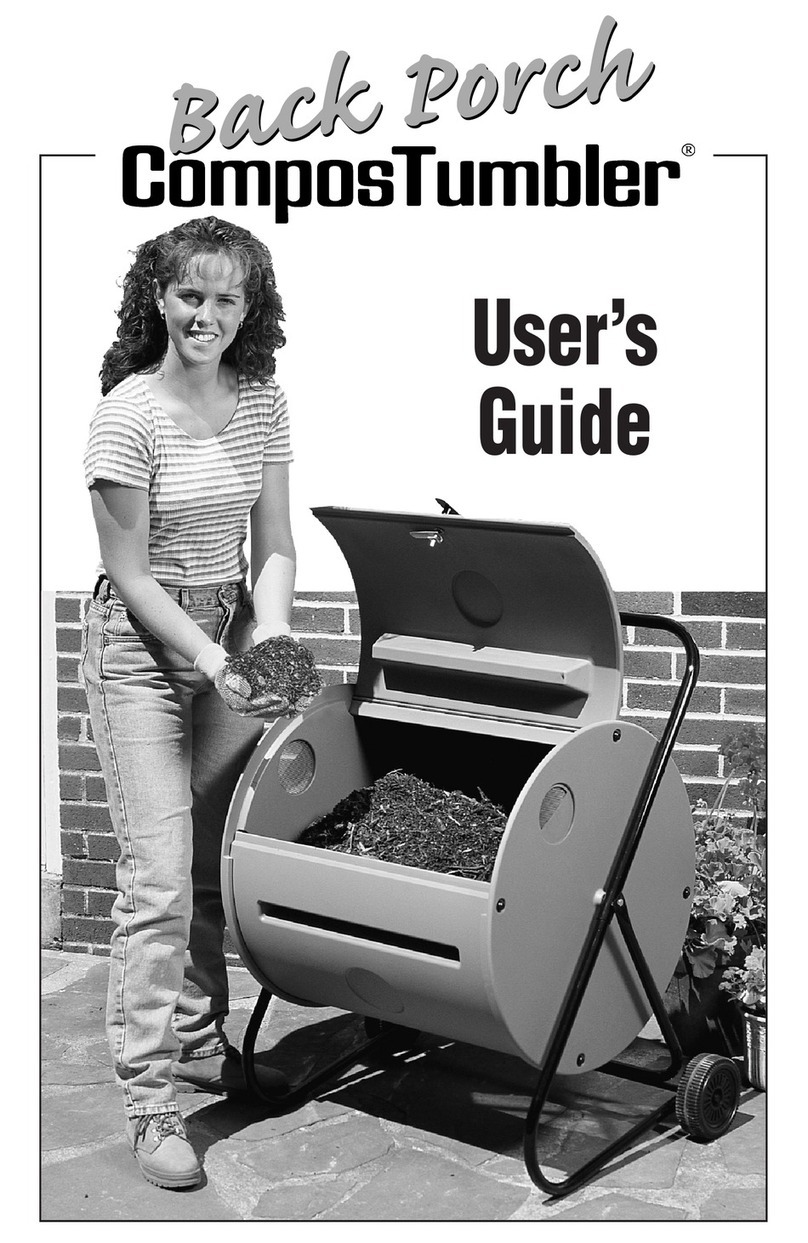
Mantis
Mantis Back Porch CompoTumbler User manual
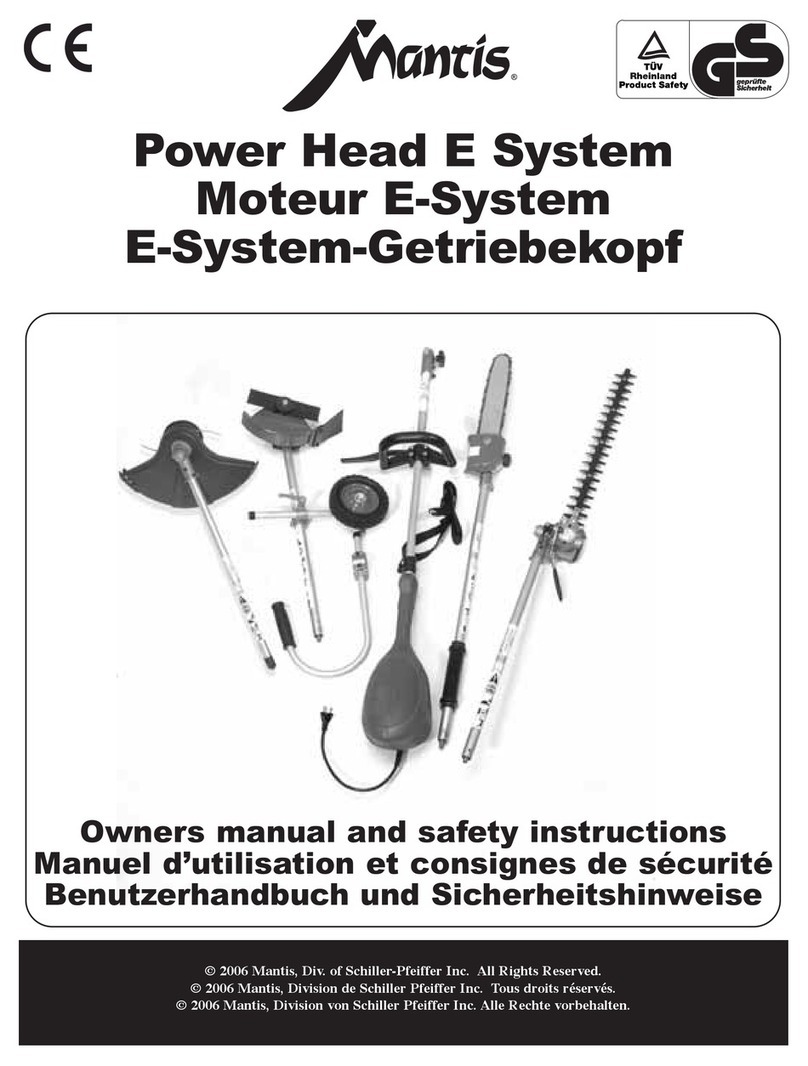
Mantis
Mantis Power Head E System Instruction Manual
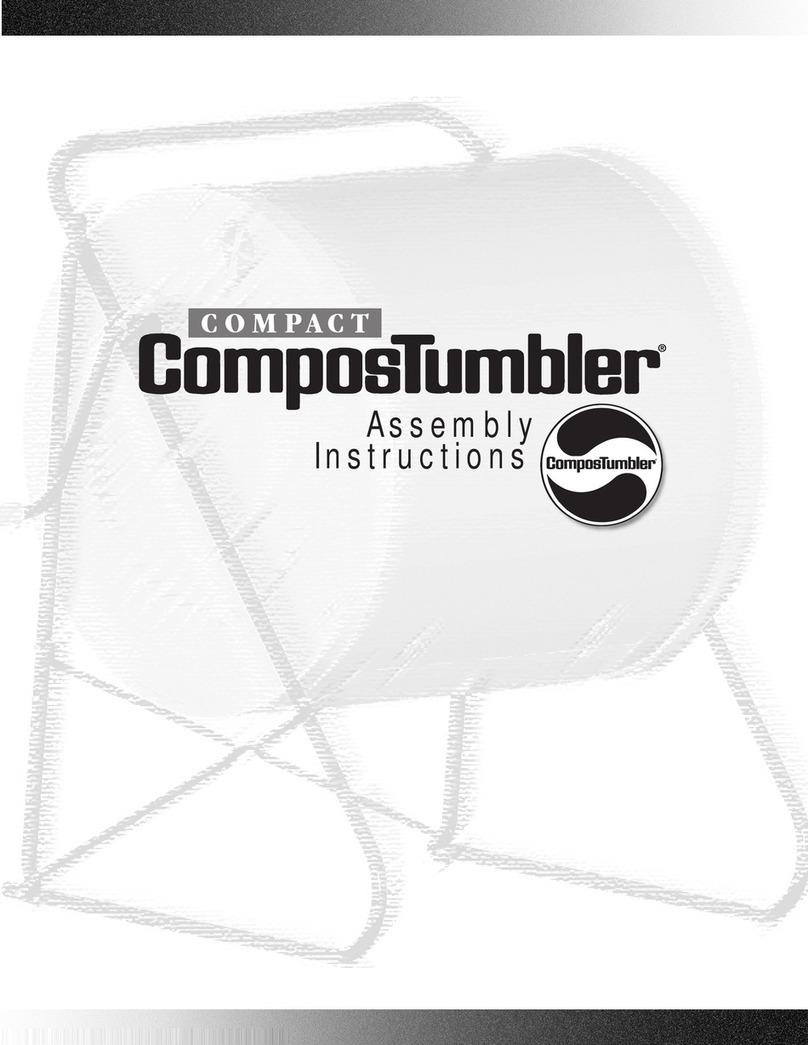
Mantis
Mantis compact compostumbler User manual
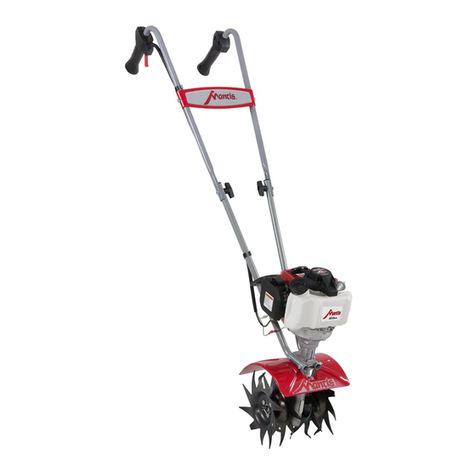
Mantis
Mantis 7268 Programming manual
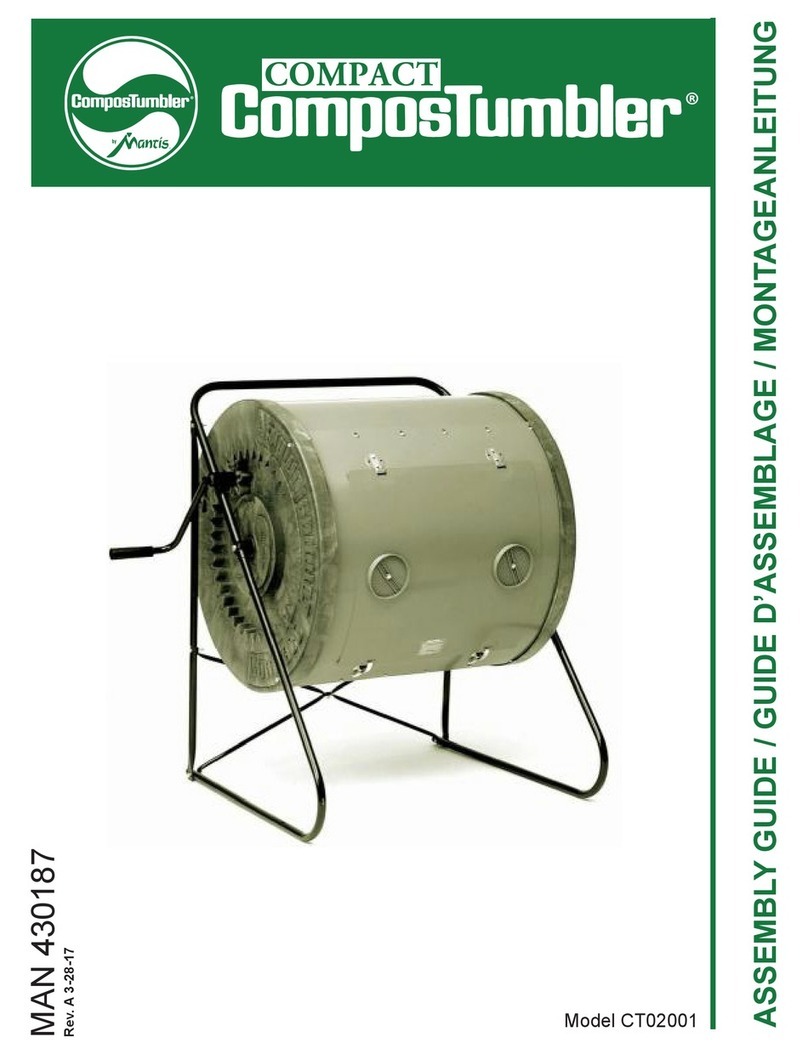
Mantis
Mantis COMPACT ComposTumbler CT02001 User manual
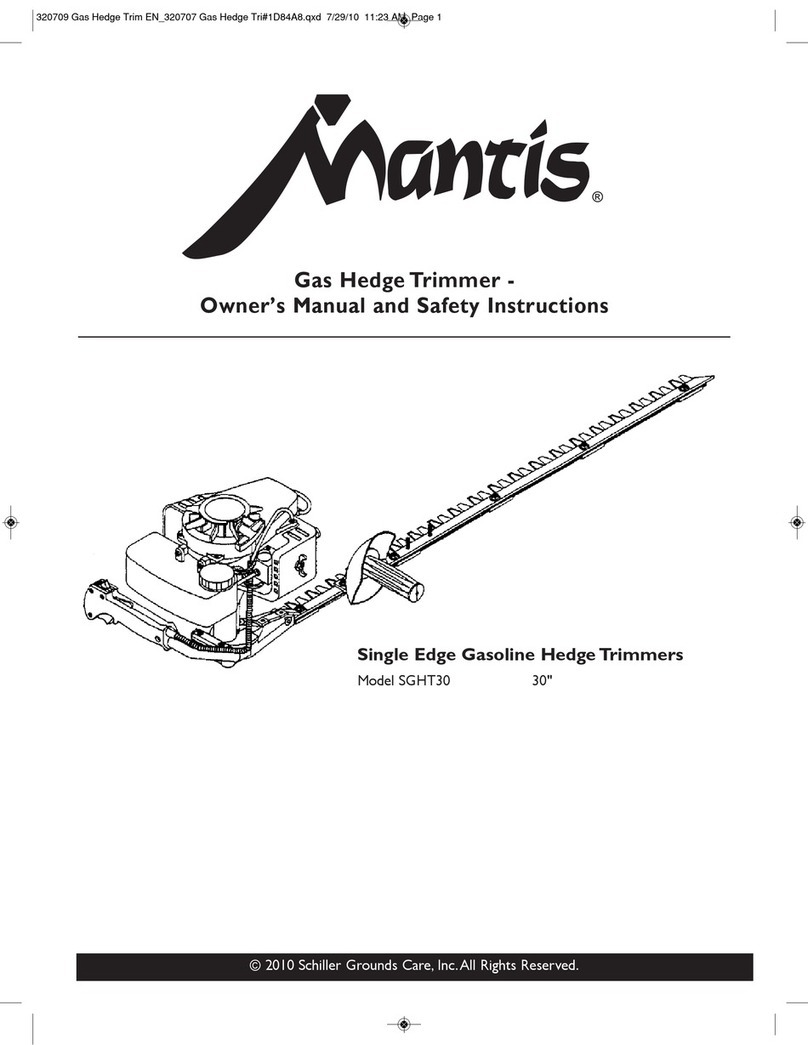
Mantis
Mantis SGHT30 Original instruction manual
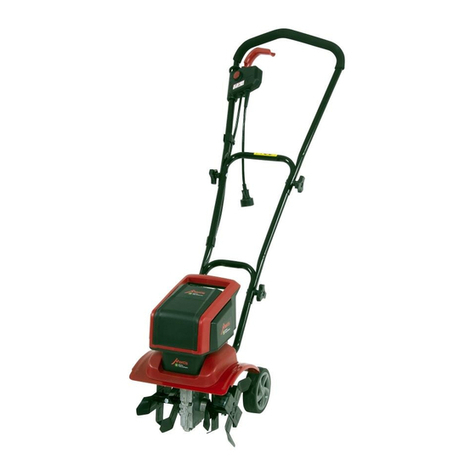
Mantis
Mantis 3000 Series Operator's manual
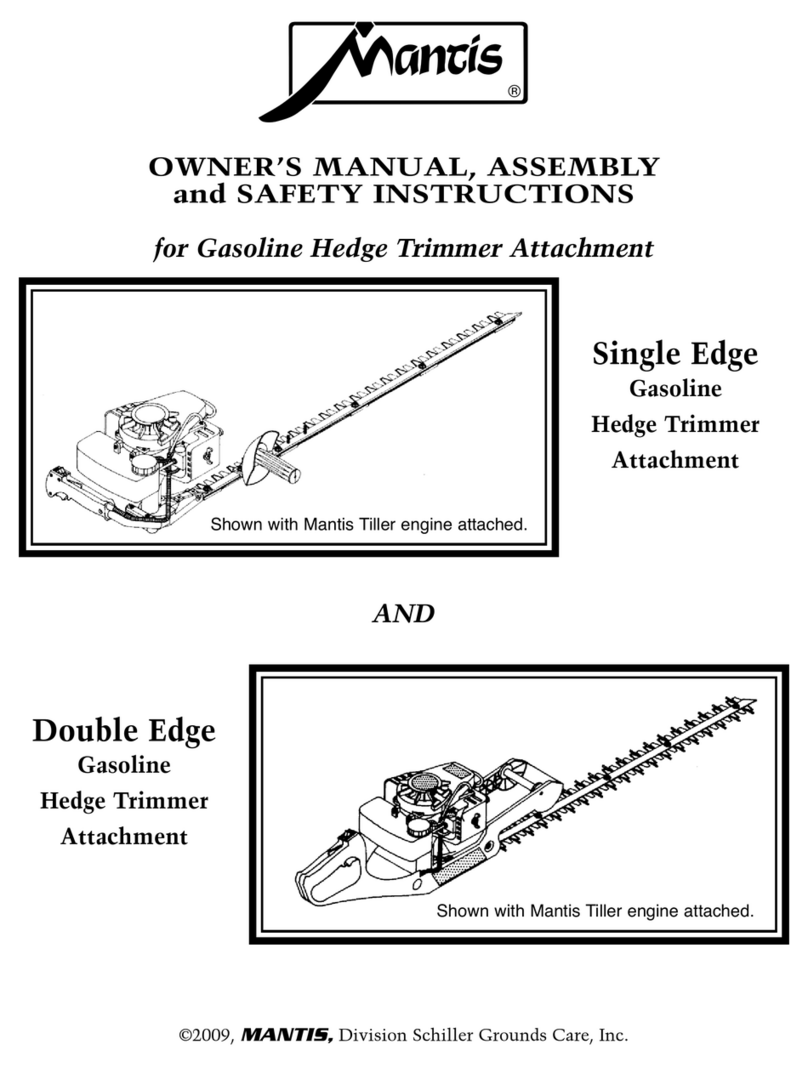
Mantis
Mantis 2224 DAHM Assembly instructions

Mantis
Mantis 5265 User manual
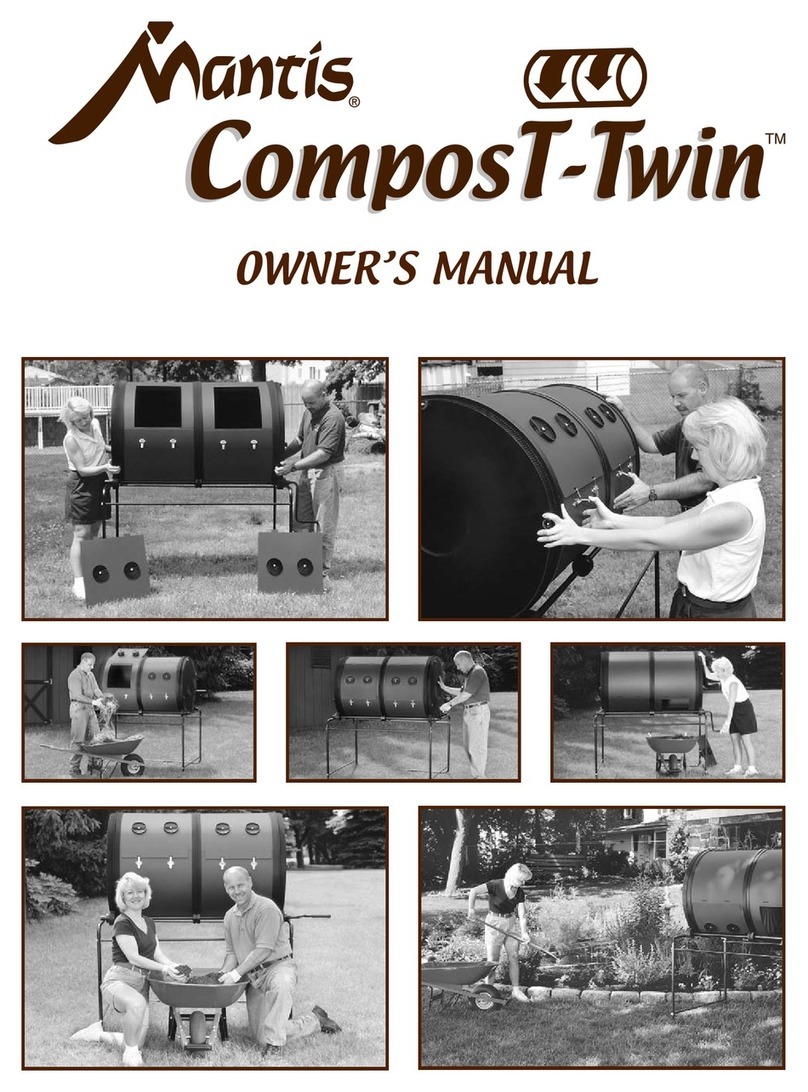
Mantis
Mantis ComposT-Twin Series User manual
